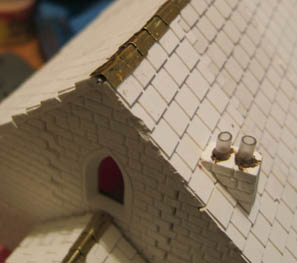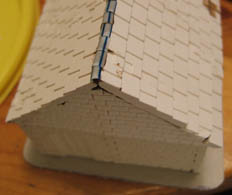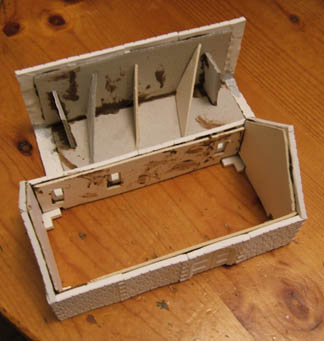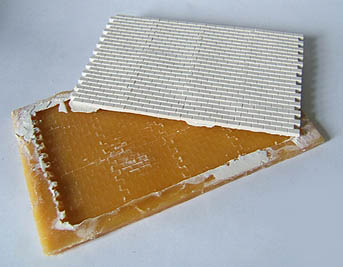|
I was delighted to discover that the mould was a success, and had good detail and was easy to use. The original master, however, had suffered greatly from the heat, and broke into many pieces. The molten Gelflex is a lot hotter than boiling water. I also used this material to make a mould of a section of stairs (steps) that I had made out of lots of Linka triangular-section pieces glued onto a flat slab. To speed up production, I made a mould of four castings from a window mould of which I only had one original Linka mould. Not only did this mean I could cast four of them at once, but I could take them out of the mould much sooner, because the Gelflex rubber is much softer and more flexible than the material used for the Linka moulds. This meant I could take the castings out of the mould while they were still much damper and weaker.
In theory, you can reuse Gelflex again and again, although I wonder if I will ever be able to bring myself to destroy a good mould and melt it down to make a new one. Since it is so soft, I imagine that the moulds will wear out fairly quickly, but unless I start casting commercial quantities, I don't see this as a limitation. I'm only casting a few for my hobby.
My last tip is on how to make the flat top on a tower. First, make the four walls of your square-section tower, and bring these up to a flat top edge. Next, turn the tower upside down and place it on a flat non-porous surface. Mix some plaster up, and pour it into the tower. The plaster will flow out along the bottom surface until it meets the side walls of the tower, which now act as the edges of a mould. You may have to press the tower down to get a good seal. Once dry, pick your tower up, and you'll find it has a perfectly-fitting flat top, to which you might like to add battlements, or whatever.
BACK TO BUILDINGS MENU
BACK TO SCENERY MENU BACK TO MODELLING MENU
Click here to go back to the home page
|




